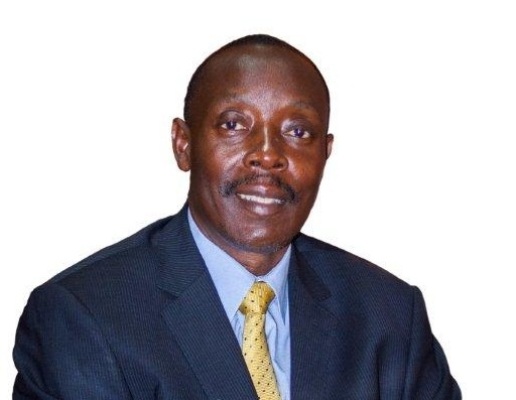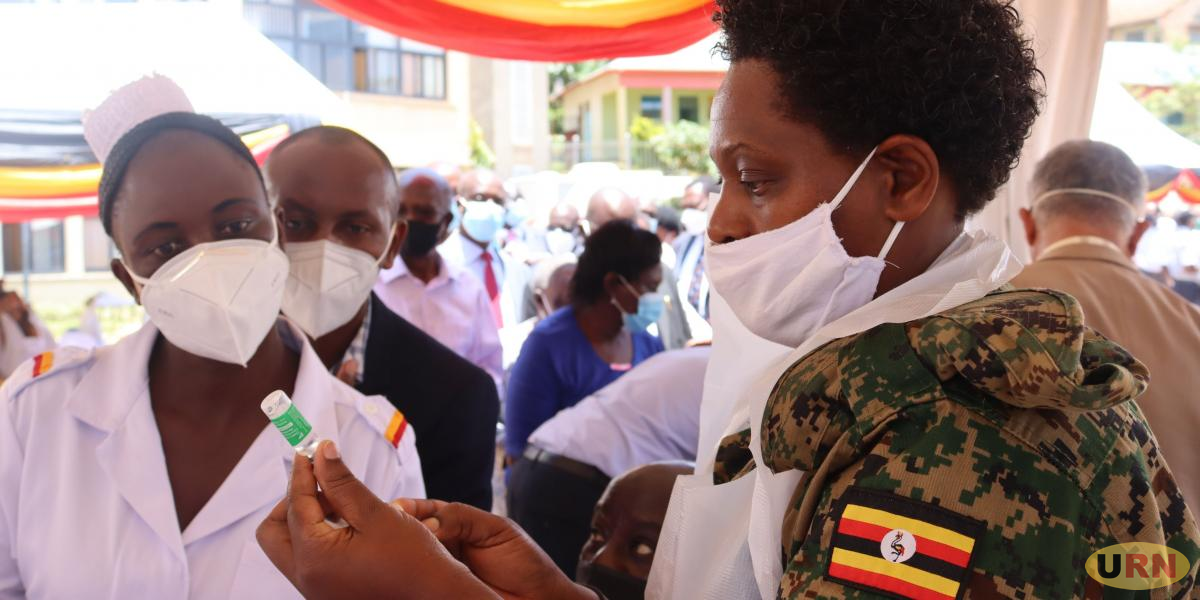Government of Uganda has been conducting geothermal surveys from the nation’s geothermal energy resources in which a benign oil spill incident recently occurred at Kibiro, Hoima District.
According to a statement issued by Robert Kasande (pictured), the Energy Ministry Permanent Secretary on
April 15, 2020, government through Ministry of Energy and Mineral Development has halted the conducting of detailed surveys from the nation’s geothermal locations at Kibiro in Hoima district, Panyimur in Pakwach district and Buranga in Bundibugyo district where preliminary surface studies had indicated geothermal reservoirs.
Kasande says in order to increase geological confidence in the studies and reduce deep exploration risk, it was recommended to drill shallow Temperature Gradient Holes (TGH) in Kibiro and Panyimur.
Community and stakeholder engagement
Prior to embarking on drilling Temperature Gradient Holes (TGH), Kasande says, Ministry of Energy and Mineral Development engaged the community and stakeholders aimed at enhancing their understanding and build consensus for the geothermal project.
“Key stakeholders engaged included authorities from Hoima District Local Government, Bunyoro-Kitara Kingdom, Kigorobya Sub-County and Kibiro Local Community which methods included site community tours to Geothermal Power Facilities in Naivasha, Kenya and Kibiro site visits. Public awareness workshops, meetings, data and information sharing with the concerned local communities were also part of the methods of engagement,” Kasande says.
Environmental Baseline Survey
He adds that the Ministry conducted an Environmental baseline survey prior to commencing the geothermal project. The study included a description of the initial state of the environment in the selected boundaries of the study area focusing on those aspects that can be influenced by the project.
Drilling of Temperature Gradient Holes
On 11th November 2019, the Ministry awarded a drilling contract to M/s Royal Techno Industries Limited to drill sixteen (16) temperature gradient wells in Kibiro and Panyimur areas.
“The drilling contractor mobilized and started drilling wells in Kibiro. Unfortunately, as a project challenge, during the drilling of the eighth and last well on the night of March 29th,2020 a blow-out happened which resulted into an uncontrolled discharge of gas, drilling fluids, geothermal fluids and sediments. A limited oil sheen was observed on sediments. The discharge caused public concern and misinformation as well,” Kasande says.
Observations by the Inter-Ministerial Task Force
He reveals that an inter-ministerial team was constituted to go and assess the incident. Members were drawn from relevant regulatory authorities which included, the Directorate of Geological Surveys and Mines, Ministry of Water and Environment, National Environment Management Authority (NEMA), Petroleum Authority of Uganda (PAU), Environment Protection Police Unit, Health Safety and Environment Unit, MEMD, Hoima District Local Government and the Senior Presidential Advisor on Oil and Gas and Mining. The following observations were made.
The surface at the site was covered with a mixture of clay, sand and drilling mud; the place had an unpleasant smell characteristic of hydrocarbon spillage; one (1) house belonging to Mr. Kiiza Julius Rubanjwa located approximately 60m downstream from the well towards the lake was surrounded by a mixture of clay, drilling mud and sand (effluent) and his pit latrine was filled by mud fluids that flowed from the well; the access road along the lake shore leading to the neighboring landing site of Kyabarangwa had residues of mud, clay and sand. The water reeds along the shore of the lake had a black deposit (resembling crude oil) at the water level mark. However, the oily sheen was observed kilometers away on all reeds along the shores of the lake in the surrounding areas and it might be associated with algae.
Conclusions
Although the discharge was not known so as to effectively quantify the materials discharged into the environment, given the length of time during which the incident occurred (more than nine hours), Kasande says it can be concluded that significant quantities of materials (natural gas, clay, water, drilling mud and limited traces of oil) were released into the environment.
“Whereas what happened in Kibiro is almost similar to what happens during an oil spill incident, it may be erroneous to dub the incident an oil spill. This is because of the composition of the observed materials that were released into the environment – predominantly sand/water/clay from the subsurface while oil is in trace levels mainly recognizable by the characteristics of hydrocarbon smell,” Kasande says.
He adds: “This incident is considered benign because even the ecology was not affected as evidenced by aquatic species that were surviving normally at the shoreline.”
Way forward
Kasande says Ministry of Energy and Mineral Development will continue to inform, consult, involve, collaborate with and/or empowering the community and stakeholders regarding decisions about matters that may affect them, such as new policies and plans.
“Ministry of Energy and Mineral Development has taken the decision to halt Temperature Gradient Holes (TGH) drilling activities in both Kibiro and Panyimur until a comprehensive Environmental and Social Impact Assessment is conducted in accordance with the new National Environment Act No.5 of 2019 to which the Ministry commits to resolve any conflict borne out of this incident,” Kasande says, adding: “Ministry of Energy and Mineral Development acknowledges the impact of the incident, however benign, regrets the incidence and is addressing the environmental cleanup and remedial mitigation efforts to restore the environment based on relevant expert recommendations and the technical advisory committee.
Ministry of Energy and Mineral Development is committed to supporting a culture of effective stakeholder and community engagement to enhance decision-making processes and to embed the practice as an integral part of its operations.”






